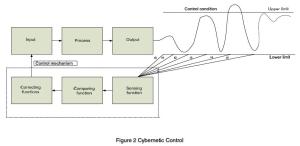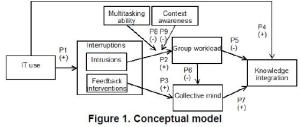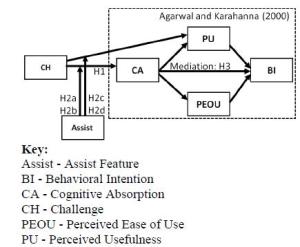Posts tagged ‘hicss’
User Resistance @ HICSS
In a track about theoretical approaches to the study of information systems, Suzanne Rivard and Liette Lapointe talked about user resistance. They propose a theory for explaining and predicting implementers’ actions to ‘control‘ user resistance to a new information system (IS) implementation. Grounding their work the General System Theory (sometimes referred to as a cybernetics or self-regulation approach) where negative feedback enables a system to self-control and stabilize while positive feedback tends to lead to system instability, they argue that in the IS domain, implementers can take remedial reactions (e.g., training) to keep user resistance within an acceptable range (a negative feedback effect). On the contrary, antagonistic reactions (e.g., authority) of exerting no reaction will have a positive feedback effect, hence enhancing the level of user resistance, which will likely lead to organizational disruption, and eventually, to the abandonment of the IS implementation.
Interruptions Resulting from Using IT @ HICSS
Shamel Addas and Alain Pinsonneault write about IT use and interruptions that break the continuity of knowledge work in groups: they propose that interruptions resulting from using IT can lead to both positive and negative effects on knowledge integration.
The first type of interruption (intrusion) increases group workload and ultimately inhibits knowledge integration while the second one (feedback interventions) enhances collective mind by providing new information that is directly relevant to completing the primary task, which is a process that is beneficial to knowledge integration. The two channels identified here are essential because knowledge integration has been know to be an essential driver of new product development performance.
Challenge in Information Systems use @ HICSS
Pamela Schmidt on the role of challenge on information system (IS) use: she shows in an experimental study that allowing users to regulate the extent of assistance (hence challenge) they receive when using an interface enhances the users’ level of cognitive absorption, a desired intermediary state usually leading users to form intentions to use or reuse a particular system.
While challenge has long been known to be essential to the design of hedonic IT, for example in the gaming industry, an argument developed in this paper is that challenge is also essential in utilitarian IT such as en enterprise resource planing (ERP) system. And therefore, that the design of utilitarian IT can be informed by the insights from hedonic IT.
Embodied Social Presence @ HICSS
Aloha!


